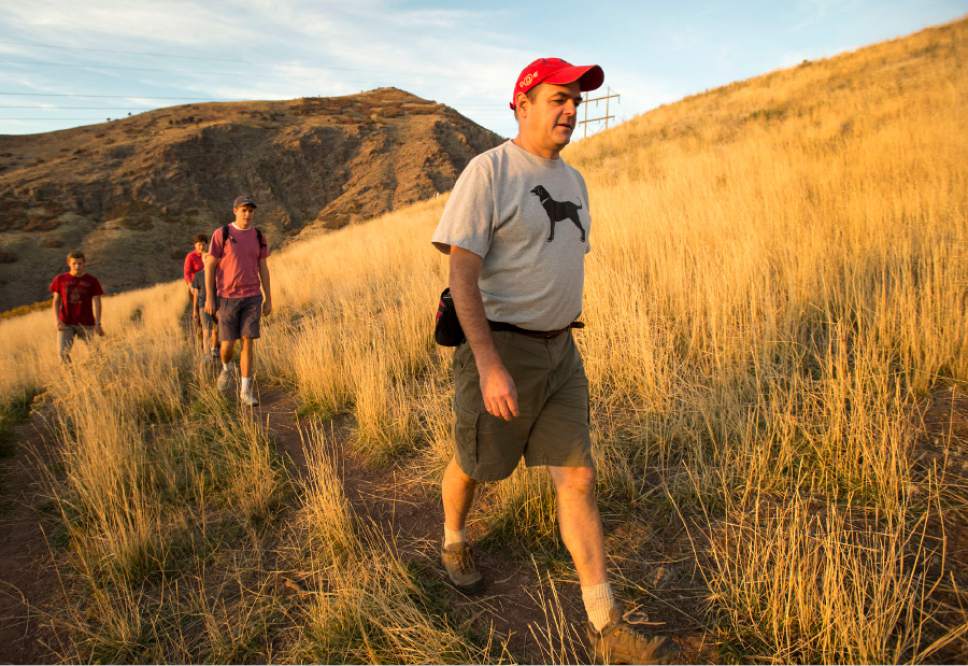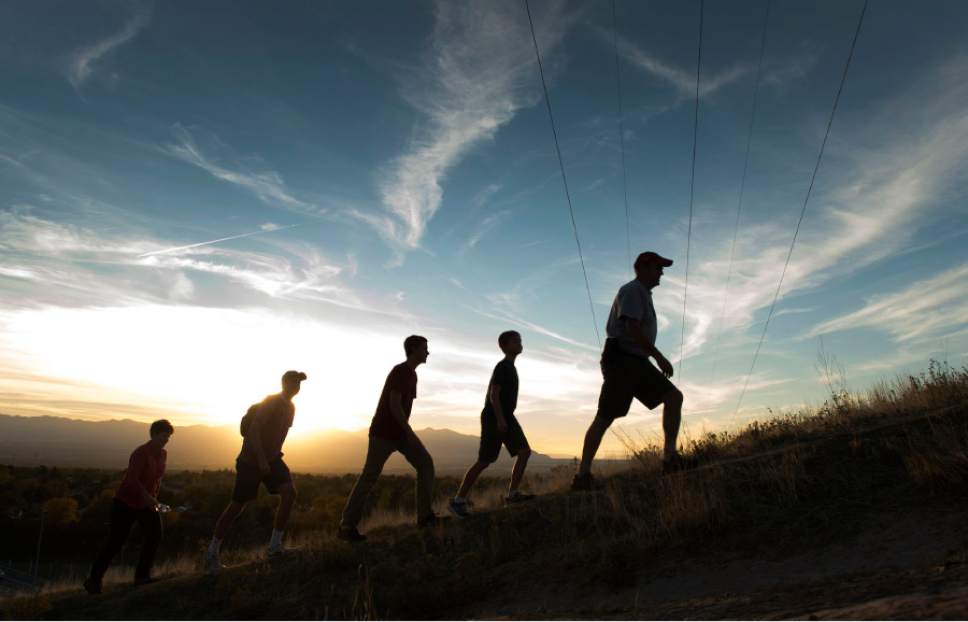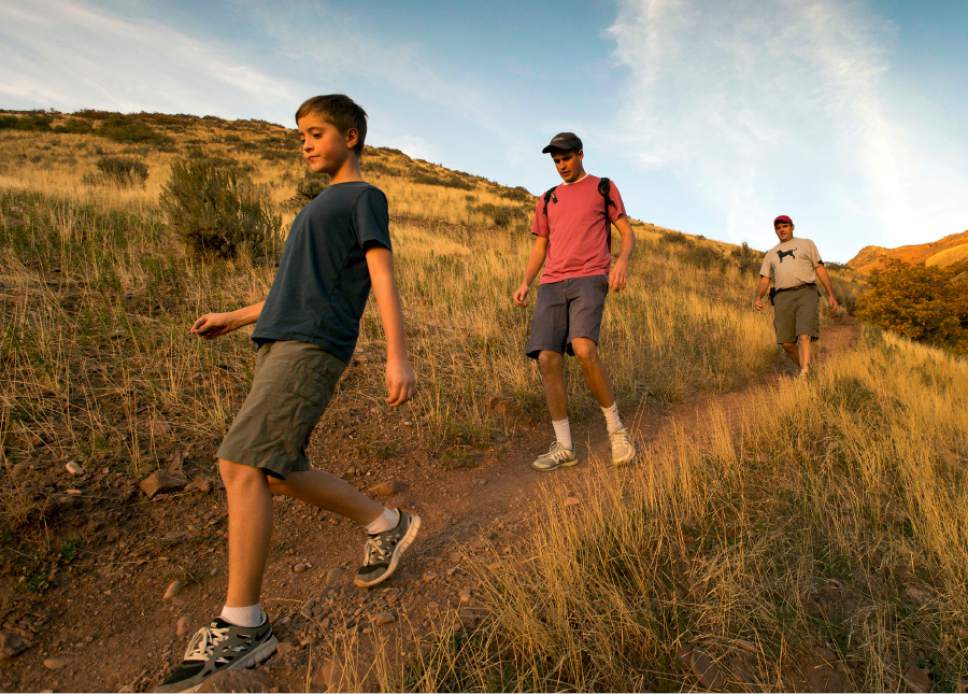This is an archived article that was published on sltrib.com in 2016, and information in the article may be outdated. It is provided only for personal research purposes and may not be reprinted.
Brian Anderson cherishes his time outdoors.
Several times a week after work the East Millcreek resident heads for the surrounding foothills, rivers or canyons.
Anderson and others are concerned legislative efforts that could lead to changes in daylight saving time in Utah will cut into their ability to get exercise, clear minds and spend time with family and friends after work.
An "avid fisherman," Anderson also bikes, hunts, plays golf and runs.
"I work during the day so I basically have between 6 p.m. and dark to do those things," said Anderson. "If I lose that time, my health would go downhill and I would lose family time. Those things are huge for me."
Utahns are scheduled to shift their clocks back one hour early Nov. 2, but some state leaders want that decades-long habit to change.
Last year, state lawmakers passed a bill asking the Governor's Office of Economic Development to study the issue. And two Republican legislators — Perry Rep. Lee Perry and South Jordan Sen. Aaron Osmond — may co-sponsor a bill next year to keep Utah on Mountain Standard time year-round, along with Arizona.
Or, the issue could be put in front of Utah voters.
A recent poll by the nonpartisan political blog UtahPolicy.com found most Utahns like some form of daylight savings. While 44 percent of Utahns surveyed want to dump daylight savings altogether, another 37 percent like the state's current system of springing forward and falling back. And 19 percent of the 800 voters polled Oct. 20-23 would like to keep daylight saving year-round.
While the idea of Utahns collectively thumbing their noses at a 50-year-old federal initiative appeals to many conservative state lawmakers, representatives of the state's recreation and tourism industries, schoolteachers and parents are pushing back.
In a GOED poll, Ski Utah, the Utah Youth Soccer Association, the Golf Alliance for Utah and others unanimously opposed shifting the state away from daylight saving, according to Brad Petersen, director of the Utah Office of Outdoor Recreation, a division of GOED.
About 27,000 respondents answered GOED's poll on the question. More than two-thirds, 67 percent, said they would prefer making Mountain Standard Time permanent. Another 18 percent favored creating a new daylight saving time just for Utah. And 15 percent said they wanted to retain the state's "spring forward, fall back" practice.
Recreation and tourism leaders say there are economic impacts to any daylight saving change.
And high school and youth athletic groups say shifting Utah's time calendar would create scheduling headaches for parents and schools alike.
Adopting a year-round standard, according to the Clark Planetarium, would make for longer mornings, including 4:46 a.m. sunrises in early June — with morning twilight starting around 4 a.m. There would be shorter evenings too — with darkness starting to fall about 7 p.m. and the latest sunsets of the year at 8 p.m.
The good news is: Kids wouldn't have to stay up until 10 p.m. for fireworks on the Fourth of July. But parents with early risers could be tortured by 4 a.m. wakeup calls.
Anderson, an engineer, has crunched his own estimates of the impacts on Utah's daylight hours. He figures the sun could start to crest at 4:26 a.m. in the middle of June.
The impact on evening hours, if a year-round standard is adopted, would likely be felt most by people with active outdoor schedules in the spring and fall — including high school athletic teams.
"Having the extra hour of daylight at the end of the day rather than in the morning allows for the outdoor activities in which high school students participate to occur later in the day with less disruption to the regular school day and less time out of class," Utah High School Activities spokesman Bart Thompson said in a written statement to the GOED.
Thompson said many high school football stadiums are equipped with lights, but other venues, including baseball and softball diamonds, soccer fields, tennis courts, and cross-country and golf courses, are not.
"Education-based interscholastic sports and activities are a vital part of education," Thompson wrote, "and the current application of daylight savings in Utah helps to allow for and encourage wide participation among Utah's high school students with fewer incursions on classroom time."
Utah's ski industry also opposes the change.
Nathan Rafferty, president and CEO of Ski Utah, says moving away from the current daylight saving tradition could not only be hard on state ski resorts, but also on tourism as a whole.
If lawmakers pursue a change, Utah would be one of three states — along with Arizona and Hawaii — not following daylight saving time.
"There is a perception out there that Utah is already a quirky state. Changing our time would just be another thing that is different about Utah," Rafferty said. "That is not necessarily different in a good category."
Utah Division of Wildlife Resources managers say they also have concerns about changes.
"A lot of our activities revolve around families being able to spend time together after school and work at community fisheries, wildlife management areas and nearby waterways," said wildlife resources director Greg Sheehan. "We are nervous how this may play out and impact our citizens."
A good number of Utahns also head to reservoirs in the summer to get a few hours of boating in after work. State Parks Director Fred Hayes worries any change in daylight hours could cut that rush — impacting revenues for the parks and surrounding businesses.
Critics say GOED's poll was skewed by numerous responses from those in favor of the year-round standard and that people affected by the possible change remain unaware of what could happen.
"Most people think it is just an inconvenience to have to change their clocks twice a year," Anderson said. "They don't understand what we would really lose if things change."
Petersen doubts Utah's daylight saving debate will ever end. And because neither alternative time schedule permanently resolves all the issues raised by a change, he believes the best thing to do is stick with the current schedule.
"Parents and others who worry about their kids walking to school in the dark gain the extra morning hour during the winter months, while those who want to take advantage of evening activities will benefit from continuing daylight saving time," he said.
"Both sides of the debate have valid feelings and comments, meaning that there is no right or wrong and seeking an 'all or nothing' solution would most likely result in us having this same debate again next year."
Twitter @BrettPrettyman A short history of Daylight Saving Time:
American founding father and inventor Benjamin Franklin is largely credited with first proposing the idea in a 1784 essay, "An Economical Project for Diminishing the Cost of Light." He suggested saving the use of candles by capitalizing on morning light.
Germany first implemented Daylight Saving in 1916 to save fuel during World War I.
U.S. President Franklin D. Roosevelt instituted daylight saving time, called "War Time," from Feb. 9, 1942 to Sept. 30, 1945.
After the war, many mass transit systems and broadcasters were confused after state and local governments were allowed to choose whether to observe daylight saving. With the Uniform Time Act of 1966, Congress standardized daylight saving time across the country.











